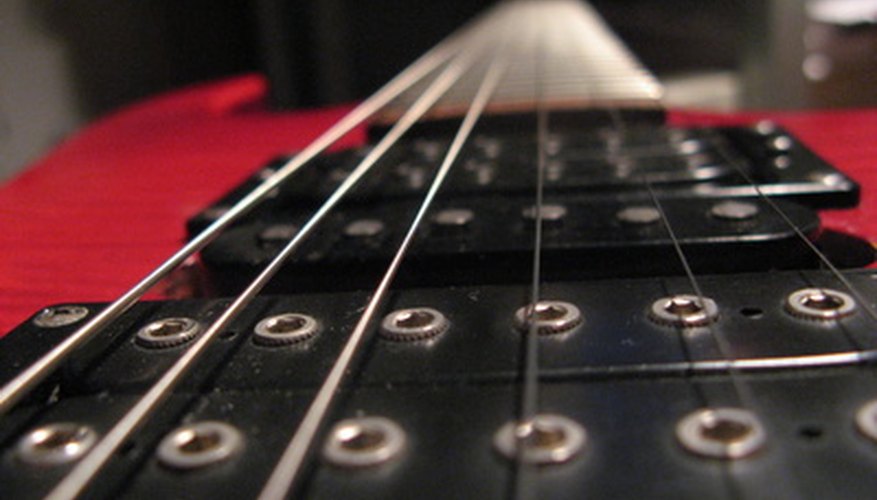Hofner is a German musical instrument manufacturer that came to prominence in the 1960s when Paul McCartney played a Hofner-made bass. The Hofner Travel guitar was a later innovation, designed as a backstage and travel guitar for musicians to use for practice. The body is smaller than your average guitar, but the neck and distance between nut and bridge are the same size as a normal guitar. Some models have built-in amplification. If you are using a Hofner Travel guitar, it's important to set it up correctly for the best performance.
- Hofner is a German musical instrument manufacturer that came to prominence in the 1960s when Paul McCartney played a Hofner-made bass.
- The Hofner Travel guitar was a later innovation, designed as a backstage and travel guitar for musicians to use for practice.
Remove the strings. When setting up a guitar, it's easier to do the first few set-up stages without the strings. Unwind the tuning machine heads until the strings are slack and then pull the ball end out at the bridge.
Align the neck to suit your style. The angle of the neck relative to the guitar body has a large influence on the playability of an instrument. If you want to adjust the neck alignment, you need to access the truss rod. Directly above the nut there is a small metal plate screwed in to the headstock. Unscrew this and the top part of the truss rod becomes exposed. To adjust the angle of the neck, you realign the truss rod using a 5-mm Allen wrench.
Set the height of the bridge. The angle of the bridge and its height from the guitar body influence the string action. String action is a term used to describe the ease with which you can fret a note. If the action is too high, more pressure is required to hold down the string, which makes it difficult to change notes quickly. If the action is too low, the strings may touch the frets and create fret buzz. You adjust the bridge height by tightening or loosening the two screws that fix the bridge to the guitar body.
- Align the neck to suit your style.
- You adjust the bridge height by tightening or loosening the two screws that fix the bridge to the guitar body.
Adjust the angle of the bridge. Some players prefer to set their bridge at a slight incline, so that the lowest string has a higher action than the top string. Achieve this by raising the height of the bridge screw closest to the low E string.
Inspect the frets for sharp edges. If a fret has a sharp edge it can cause your strings to snap. The frets should be smoothly contoured. If you find any sharp edges, gently file the fret with a metal file.
- Adjust the angle of the bridge.
- If you find any sharp edges, gently file the fret with a metal file.
Put on a new set of strings and tune the guitar. Start with the lowest string first.
TIP
Before putting the strings back on, clean the fret board with a damp cloth.
WARNING
Don't raise the bridge too high, as this can cause the mechanism to become unstable.
